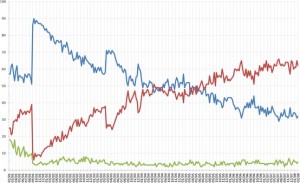It’s almost an axiom: Everyone should go to college or trade school. Your earning potential is dramatically higher, to the tune of a million dollars more over your lifetime than if you don’t have a degree, especially in the United States.
It’s a given. You must have some form of post-secondary education. Your opportunities grow, and you can enjoy a higher standard of living and enrichment. That’s it, that’s the deal, and we can all agree.
But then what happens when you hear your nephew, who has always struggled with school but is great with his hands decides not to go to college and try to start a business from home?
Well, yes, that’s a great decision for him; he got into so much trouble in school and could not put in the focus and attention to study, but he’s really bright and motivated when he’s dedicated to an idea…so it makes sense.
Or the guy you know in your church. He tried but just didn’t feel comfortable at college and has a great opportunity on the ground floor of this new manufacturing company in town and he’s great with people. Well, no, he’s fine not going to college. But just a minute ago, it was a given that everyone should go to college.
So which is it?
It’s not a matter of right and wrong or even wishy-washy personalities. It’s that there are convoluted relationships between ideas and information, and they can clash monumentally.
Debt is another great example. We know we should not live in debt, and we’re fully aware of the consequences of it, but when your daughter has an amazing opportunity to go on a college study abroad program that could open up all kinds of opportunities for her future, what do you do? You know it’s detrimental to go into debt, but you don’t want to limit your child’s opportunities.
This plurality, interestingly, can be measured, studied, and analyzed in market research. We study the plurality of thought of our clients and their customers and citizens. The goals are to identify these pluralities — what do they look like, what are the conflicts — and then to pull them to the forefront.
Then the real key is to measure the strengths of each side of the plurality. Which way is someone more likely to go when he or she is forced to make a decision? Research is about understanding perceptions and behaviors and then changing actions.
When you understand these conflicts, you can better understand your market. Then you can look for ways to align your offerings within the conflicts that exist. When you do so, you are in the perfect position to fulfill the need of the moment.





